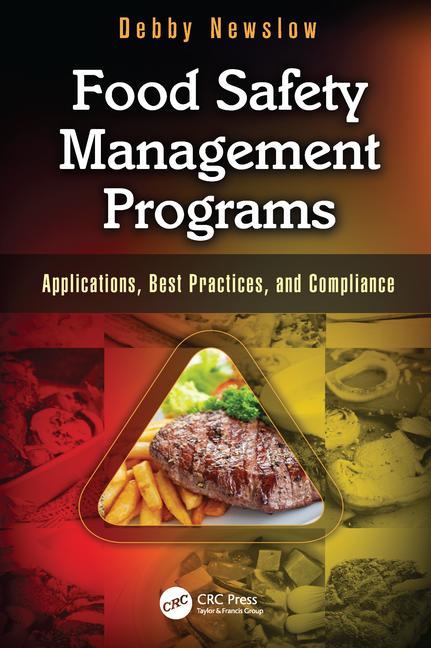Packaging for Enhanced Food Security

I have been asked to launch this new column to communicate the latest advances and trends in packaging, spoilage and stability of packaged foods. This column will typically cover trends among the sophisticated food packaging players in the developed world, primarily the U.S. and European Union (EU), and typically involve high technology. I will leave these discussions to subsequent contributors, but I wish to present that the trend to replace absent or ineffective packaging with more protective food packaging is more significant to the growth of the packaging industry than any particular new development. The combination of increased food protection and the continuing trend for proactive food processing control (maintained with packaging) offers unprecedented potential to increase global food security.
Food security is achieved by people acquiring a safe, adequate and appropriate food supply. “Safe” is absence of hazard; “adequate” is sufficient in both calories and nutrients; “appropriate” relates to taste and ethnicity (especially important when offering food aid to other countries in response to emergencies, i.e., using readily available food).
Establishing Processes for Safe Food
A significant development in the promotion of food safety was the concept of process control versus sampling of finished product, that is, prevention rather than inspection. Hazard Analysis and Critical Control Points (HACCP) was developed in the 1960s by NASA and Pillsbury from the realization that foodborne disease in space was to be avoided—accentuated with the potent image of an astronaut vomiting in zero gravity. The goal, therefore, was to eliminate potential hazards through a combination of multiple barriers to microbial growth and careful in-process monitoring to ensure that critical processes remained within acceptable limits. Although HACCP was mandatory for specific sectors, it was voluntary for most of the food industry.
The seven principles of HACCP are likely known to readers of this column, but are summarized here as a basis for extensions below:
1. Conduct a Hazard Analysis (hazards to consumer)
2. Determine the Critical Control Points
3. Establish critical limits
4. Establish monitoring procedures
5. Establish corrective actions
6. Establish verifying procedures
7. Establish documentation procedures.
The U.S. Food Safety Modernization Act was signed into law January 2011, with the aim to prevent contaminated food from entering the marketplace. HACCP programs are a central component of this approach. The goal is to prevent outbreaks rather than respond to them. Since outbreaks of foodborne disease impact the confidence in our entire industry, I applaud efforts that bring proven food safety programs into more widespread use. They have initial costs but add long-term profitability and viability.
Where Does Packaging Fit In?
Primary packaging, that is, packaging in direct contact with the product, is critical to the success of any food processing effort. Any processing is ineffective unless appropriate packaging protection is employed. With thermal processing, be it canning (filling an unsterile metal, glass, polymer or laminate container with an unsterile product, sealing that container and heat-processing to commercial sterility) or aseptic packaging (introducing a sterile product—typically processed through high-temperature, short-time processing—into a sterile package in a sterile environment), a hermetic package is critical to food safety. Dried, fermented, natural and processed foods all require appropriate package containment and protection.
Food safety is typically defined in terms of food hazards that result in disease. Disease resulting from nutritional inadequacy, or more critically, starvation, is not typically considered in the food hazard category. It is reasonable to extend the definition of food safety to include adequacy. Packaging that extends shelf life, helps retain nutrients and allows food to be transported to remote areas then becomes an important component of both the food safety and adequacy components of food security. We can extend the hazard list to include:
• Chemical contamination: most feared by consumers
• Physical abuse: most noticed by consumers
• Microbiological hazards: most dangerous and already the major emphasis
We can also include actions that reduce the food supply:
• Biological attack (e.g., birds, rodents, insects)
• Biological action of product (e.g., senescence and sprouting)
Can HACCP Incorporate All of These Hazards?
I proposed a post-harvest HACCP (PHHACCP) plan in 2005 as an effective and rational means of ensuring food protection and delivery from harvest through consumption. The “Hazard” definition was extended to include anything that renders food unusable for human consumption, and therefore unable to sustain life.
The Food Safety Alliance for Packaging (FSAP; a technical committee of the Institute of Packaging Professionals) has developed HACCP models for a variety of packaging materials. These models are available on www.foodsafetyalliancefor packaging.com and extend the HACCP principles to the manufacture of packaging materials.
The post-harvest component extends hazard concerns to other components of the distribution environment, including storage facilities, handling, transportation packaging (in terms of protection from external forces), transportation modes and environmental realities (including weather and fauna).
PHHACCP would add the following to the HACCP principles:
1. Include analysis for the entire distribution chain
2. Identify each mechanism of food loss (nutrition or quantity)
3. Evaluate which mechanisms can be controlled
4. Evaluate which mechanisms should be controlled
5. Establish limits
6. Continue with HACCP principles
Controlling Food Losses
There is a growing realization that handling, processing, packaging, storage and transportation (collectively, post-harvest) have the potential to reduce global hunger on par with increases in global food production. The Food and Agriculture Organization of the United Nations (FAO) presented two significant reports that were prepared for the Save Food Congress held in association with Interpack in May 2011. The first report, “Global Food Losses and Food Waste” (www.fao.org/fileadmin/user_upload/ags/publications/GFL_web.pdf), estimated world food losses at 33 percent, or 1.3 billion tons per year. The second report, “Appropriate Food Packaging Solutions for Developing Countries” (www.fao.org/fileadmin/user_upload/ags/publications/AFP_web.pdf), described packaging roles to reduce food losses. This was a significant change from the FAO stance at the World Food Summit: five years later (Rome, 2002) at which most efforts to address hunger were based on improving agricultural production. The U.S. sponsored a symposium at that summit in which presidents of three African countries presented reports that genetically modified seeds improved harvest yields by up to 500 percent. I met with the Ghana minister of agriculture after this symposium, and he confirmed that Ghana’s infrastructure was incapable of handling all of this increase and food losses had risen. The increased production, therefore, did not yield a proportional increase in the food supply.
Shelf life or usable life defines the length of time that a product can be distributed and used after distribution. Bananas offer a simple example. Bananas last for months in the green state and days in the ripe, yellow state. Scrubbing the growth hormone that triggers senescence, ethylene, maintains bananas in the more stable state until just prior to point of sale. Bananas are then exposed (during storage) to approximately 1 ppm ethylene to resume the ripening process. The result is that we have bananas available all year and those in a specific supermarket tend to be close to the same degree of ripeness. The shelf life is defined not by the primary packaging, but rather by the entire distribution chain.
Transportation packaging is a critical component of food distribution. A study was completed in Sri Lanka that demonstrated that fresh produce packaged in the traditional burlap (jute) bags experienced between 22 and 28 percent loss en route to the Colombo “green” market. This resulted from bottom bags being crushed, exacerbated by potholes and other road hazards. Crates restricted the force of stacked produce and reduced the loss to 5 percent. Programs that increase the amount of already produced food that reaches consumers can be cost-effective and implemented more rapidly than waiting for the next harvest.
Food losses occur through many mechanisms and some cannot be partially or fully controlled. Losses will still occur when products (e.g., bananas) cannot be sold after over-ripening, product is bruised and not salable, product is acceptable but not salable due to overabundance (right after harvest) or even due to food regulations based on visual, size or shape attributes (discussed below) that are unrelated to health. Such food items cannot be brought to market in their existing state.
Food safety can be achieved by altering the product from an unacceptable (but healthy) state into another form. Food items may be processed or modified to improve their shelf life and/or value. This is outside the normal HACCP options, but the HACCP principles could be applied to the preparation of the new products.
An innovative example of converting food otherwise wasted into viable products was developed by Dr. Alastair Hicks, senior post-harvest officer for FAO at the Southeast Asia regional branch. He developed a program on economic development through village-level food processing through which rural villagers in less developed countries were trained in basic sanitation and food processing and offered basic equipment (e.g., drying racks, netting, pressure cookers, fryers) to recover food that would normally be lost and use it as inputs for value-added food products (e.g., fried banana chips). Packaging these products offers foods with extended shelf life that provides more time for sale, and income to build small business. This process both recovers food normally lost and promotes economic development in these remote regions. The key is shelf life extension and safe food products.
Effects of Restrictive Regulations
Some food losses result from food regulations that are based on food attributes unrelated to food safety. Regulations based on color, shape and size, for example, result in the destruction of tons of food. Other regulations may be based on perceived food hazards that are not scientifically established. The use of Alar that decimated the apple industry in the U.S. Northwest and the destruction of food that might contain parts-per-trillion levels of Sudan Red in the UK, for example, were perceived threats that seriously impacted segments of the food industry, but the regulatory reactions could not be justified by a scientific risk/benefit analysis. Food safety is not served by such regulations (or public reactions based on fear), and significant food losses can result.
The Global Harmonization Initiative (GHI; www.globalharmonization.net) was formed through a network of scientific organizations to facilitate the harmonization of food safety regulations and legislation. The objective emphasizes that food regulations should be based on a scientific evaluation of risk and strives to harmonize rules made by individual governments and international regulatory bodies. GHI “anticipates that elimination of the regulatory differences will make it more attractive for the private sector to invest in food safety R&D, consequently strengthening the competitiveness of each nation’s food industry and of the industries supplying the food sector. Harmonizing global regulations will facilitate the application of new technologies, encouraging the food industry to invest in such technologies to ensure better safety and quality for consumers!” The result will be more abundance of safe food.
The FAO report on food losses presented differences between food losses in the developed and developing world. Food losses in the developing world tend to be related to financial, managerial and technical limitations of food distribution between the farmer and the consumer. Food losses and waste in the developed world mainly relate to consumer behavior and “lack of coordination between different actors in the supply chain.” A possibly surprising finding presented in the FAO study was that “on a per capita basis, much more food is wasted in the industrialized world than in developing countries. We estimate that the per capita food waste by consumers in Europe and North America is 95–115 kg/year, while this figure in Sub-Saharan Africa and South/Southeast Asia is only 6–11 kg/year.”
Some of the food losses in the developed world are based on regulations that are not safety-based, as mentioned above; some result from marketing practices such as refusing produce that is a less desirable size, shape or color or has a slight blemish and some are wasteful practices. An example offered in the Save Food Congress was an EU regulation that banned curved cucumbers. Farmers therefore could not sell curved cucumbers, and they were not harvested. The EU later removed that regulation, but supermarkets still refuse to buy curved cucumbers, so they are still rolled into the soil.
Much waste is generated through a variety of practices at retail, restaurants and hospitality entities and by consumers. Supermarkets, for example, stock shelves with every variety of baked products such that customers shopping near closing times have a full choice. Items not sold become wasted. Restaurants, banquets and hospitality often serve considerably more food than required. Consumers often discard food products that reach their “best by” date, even though those products are perfectly safe. The approach to reducing these losses is primarily education and a realization of their magnitude. I have offered ideas to effect this through www.ift.org/food-technology/past-issues/2011/july/features/addressing-global-food-waste.aspx.
Conclusions
Promoting food safety and security on a global basis matters greatly to suppliers of processing and packaging materials and machinery, as well as to the populations their products serve. The U.S. population is about 310 million and that of the EU around 500 million. Our combined total of 810 million, compared with the world population of 7 billion, means we constitute less than 12 percent of the potential market for “appropriate” technologies. The remaining 88 percent of the world’s population will require packaging materials and processing and packaging equipment to extend their food supplies. Development of small-to-medium food enterprises will begin a cycle of economic development that builds resources to justify further development. The bottom line is that we can extend safe and adequate food for humanitarian and commercial impacts.
Kenneth S. Marsh, Ph.D., CPP, is a consultant on food, packaging and international trade through Kenneth S. Marsh & Associates Ltd.
Looking for a reprint of this article?
From high-res PDFs to custom plaques, order your copy today!







